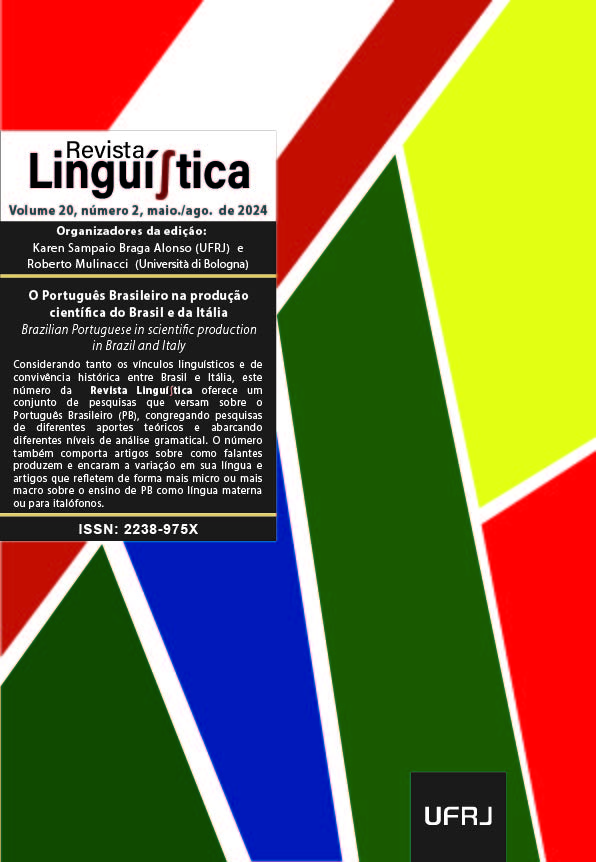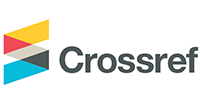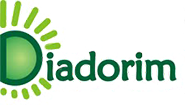Português como língua adicional em ambiente italiano: indícios de construções diassistêmicas
DOI:
https://doi.org/10.31513/linguistica.2024.v20n2a64327Resumo
Este artigo tem como objetivo apresentar algumas reflexões acerca das produções linguísticas de falantes italófonos que adquirem o Português como Língua Adicional (PLA) em instâncias classificadas como Português Língua de Herança (PLH) e Português Língua Estrangeira (PLE). Numa perspectiva cognitivo-funcional (Bybee, 2016; Croft, 2001; Goldberg, 1995, 2006), seguindo o modelo da Gramática de Construções Diassistêmica (Höder, 2014, 2018), o estudo busca oferecer contribuições no que concerne à compreensão das manifestações linguísticas em ambientes multilíngues (português-italiano). De cunho qualitativo e interpretativo, o estudo apresenta e descreve dados de produções orais de falantes de PLH, com faixa etária entre os 5 e 13 anos, e dados de produções escritas de aprendizes jovens de PLE, alunos de graduação do 1° ano do Leitorado de Português, do curso de Língua e Tradução da Universidade de Pisa. Os dados mostram características do diassistema e do construto multilíngue, além de revelar particularidades das diaconstruções como ocorrências inespecíficas do processo de aquisição, confirmando competências no uso das diferentes línguas do repertório desses falantes.
Palavras-chave: Português língua adicional. Língua de herança. Gramática de construções diassistêmica. Contextos multilíngues. Plurilinguismo.
Downloads
Downloads
Publicado
Edição
Seção
Licença
Copyright (c) 2025 Revista Linguíʃtica

Este trabalho está licenciado sob uma licença Creative Commons Attribution-NonCommercial 4.0 International License.
Autores que publicam na Revista Linguí∫tica concordam com os seguintes termos:
Os autores mantêm os direitos e cedem à revista o direito à primeira publicação, simultaneamente submetido a uma licença Creative Commons que permite o compartilhamento por terceiros com a devida menção ao autor e à primeira publicação pela Revista Linguí∫tica.
Os autores podem entrar em acordos contratuais adicionais e separados para a distribuição não exclusiva da versão publicada da obra (por exemplo, postá-la em um repositório institucional ou publicá-la em um livro), com o reconhecimento de sua publicação inicial na Revista Linguí∫tica.

A Revista Linguí∫tica é uma revista do Programa de Pós-Graduação em Linguística da UFRJ e se utiliza da Licença Creative Commons - Atribuição-NãoComercial 4.0 Internacional (CC-BY-NC)









